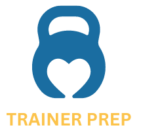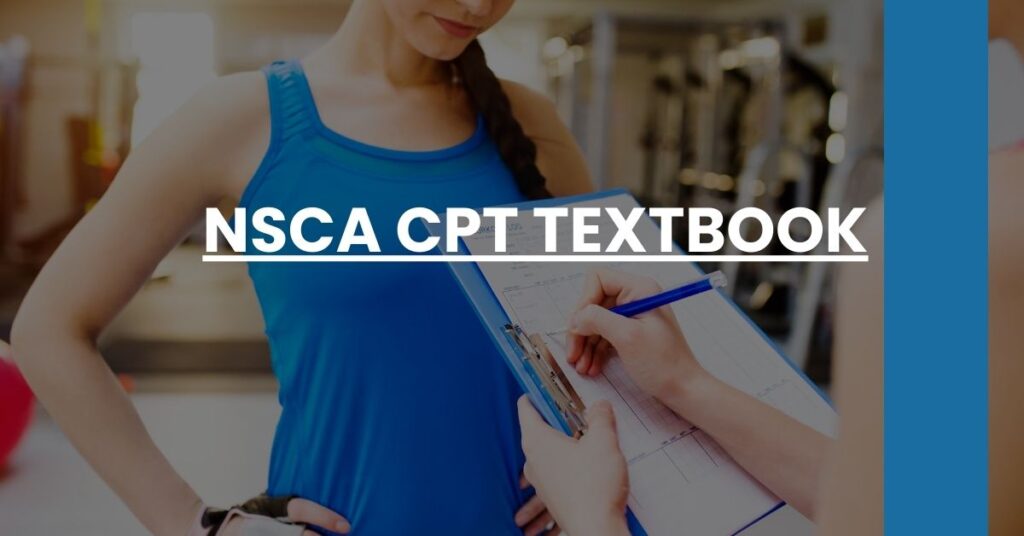Navigating the NSCA CPT Textbook can seem overwhelming at first. You’re not alone if you’re feeling a bit intimidated by the sheer volume of information and the complexity of the subjects covered. Aspiring personal trainers and fitness professionals rely heavily on this essential resource, and mastering it is crucial for your certification and career development.
To help ease your journey, I’ve put together a comprehensive guide that will:
- Break down the core content areas of the NSCA CPT Textbook
- Highlight the benefits of choosing the NSCA CPT certification
- Offer practical study tips and strategies to master the material efficiently
- What Is the NSCA CPT Textbook?
- Why Choose the NSCA CPT Certification?
- Inside the NSCA CPT Textbook: Core Content Areas
- How to Efficiently Study the NSCA CPT Textbook
- Understanding Key Concepts in Exercise Science
- Program Design and Implementation
- Nutrition and Client Consultation
- Common Exam Questions and How to Address Them
- Additional Resources for NSCA CPT Certification
- Conclusion
What Is the NSCA CPT Textbook?
Defining the NSCA CPT Textbook
The NSCA CPT Textbook, officially titled “NSCA’s Essentials of Personal Training,” serves as a vital resource for anyone aspiring to become a certified personal trainer. This detailed guide outlines the knowledge, skills, and competencies necessary to excel in the personal training industry.
The textbook not only prepares you for the NSCA CPT certification exam but also builds a solid foundation in various key areas of personal training such as exercise science, program design, nutrition, and client consultation.
Purpose of the NSCA CPT Textbook
This textbook aims to provide a foundational understanding of exercise science, including anatomy, physiology, and biomechanics. It also emphasizes the principles of designing effective and tailored fitness programs. By incorporating nutritional insights and consultation techniques, the book equips you with a holistic approach to personal training.
Importance for Aspiring Personal Trainers
Earning a CPT certification from the NSCA sets you apart in a competitive industry. The certification is recognized and respected by fitness organizations and employers around the world. This means that a thorough understanding and mastery of the textbook’s content can open doors to numerous career opportunities. You can work with varied client demographics, enhancing your versatility and broadening your impact in the health and fitness sector.
Why Choose the NSCA CPT Certification?
Benefits of the NSCA CPT Certification
The NSCA CPT certification is a highly sought-after credential in the fitness industry. It stands out for its rigorous standards and comprehensive content coverage. Here’s why choosing this certification can be beneficial:
- Industry Recognition: The NSCA CPT certification is acknowledged by top fitness organizations and employers, which enhances your credibility.
- Career Opportunities: A respected certification can significantly improve your job prospects, enabling you to work in various settings like gyms, health clubs, and private training studios.
- Professional Development: The NSCA offers ongoing learning opportunities, networking events, and educational discounts specifically for certified professionals.
Enhancing Your Career Prospects
Statistics show that certified personal trainers often command higher salaries and have better job security. According to the Bureau of Labor Statistics, the demand for fitness trainers and instructors is expected to grow, making now an excellent time to invest in a certification that can boost your career trajectory.
Inside the NSCA CPT Textbook: Core Content Areas
Exercise Science
The exercise science section delves into the fundamental aspects of human anatomy, physiology, and biomechanics. Understanding these concepts is crucial for designing safe and effective exercise programs. Key topics include:
- Muscle Anatomy: Detailed descriptions of muscle groups and their functions.
- Cardiovascular System: Insights into how the heart and blood vessels function during exercise.
- Biomechanics: Principles that dictate how the body moves and how to optimize these movements to prevent injuries.
Program Design
This section teaches you how to create customized workout plans based on individual client needs. Topics covered include:
- Assessment: Techniques for evaluating a client’s fitness level and identifying their goals.
- Principles of Training: Understanding overload, progression, and specificity to create effective programs.
- Periodization: Planning training cycles to optimize performance and recovery.
Nutrition
The nutrition section equips you with the basics of diet and nutrition, and how they influence exercise performance and recovery. Topics include:
- Macronutrients and Micronutrients: Understanding the roles of proteins, carbohydrates, fats, and vitamins.
- Hydration: The importance of water and electrolyte balance.
- Nutrient Timing: Guidance on when and what to eat around workout sessions for optimal results.
Client Consultation
Finally, the client consultation section focuses on the interpersonal skills required to effectively manage client relationships. It covers:
- Communication Techniques: How to conduct initial and ongoing consultations.
- Motivation Strategies: Methods to keep clients engaged and motivated.
- Ethical and Legal Considerations: Understanding the professional and ethical responsibilities as a personal trainer.
How to Efficiently Study the NSCA CPT Textbook
Develop a Study Schedule
To master the content effectively, develop a structured study schedule. Break down the chapters into manageable sections and allocate specific times for study.
- Read the Textbook Cover to Cover: Start by getting a comprehensive understanding.
- Focus on Key Chapters: Give special attention to chapters 9-17, which are pivotal for the exam.
- Use Practice Exams: Take the three practice exams offered by NSCA to identify your strengths and areas needing improvement.
Note-Taking Techniques
Effective note-taking can significantly improve your grasp of the material. Use these strategies:
- Highlight Key Terms: Focus on bolded terms but aim to understand their broader context.
- Summarize Concepts: Write down summaries in your own words to reinforce understanding.
- Create Flashcards: Make flashcards for quick reviews of essential terms and concepts.
Understanding Key Concepts in Exercise Science
Anatomy: The Foundation of Exercise Science
A thorough understanding of anatomy helps you create effective exercise programs. You need to know the major muscle groups and their functions, such as:
- Skeletal Muscle Anatomy: Knowing how muscles like the quadriceps, hamstrings, and deltoids function.
- Cardiovascular Anatomy: Understanding how the heart pumps blood and how this affects exercise performance.
Physiology: Understanding Body Systems
Physiology provides insights into how different body systems respond to exercise. Key areas include:
- Energy Systems: Learn about ATP production, anaerobic and aerobic pathways.
- Muscle Physiology: Understand muscle contraction, fiber types, and the role of neuromuscular adaptations.
Biomechanics: Optimizing Movement
Biomechanics is crucial for ensuring safe and effective exercise execution. Focus areas include:
- Movement Mechanics: How to optimize exercises like squats, deadlifts, and presses.
- Injury Prevention: Techniques to prevent common injuries and ensure long-term client health.
By mastering these key concepts, you can design more effective and scientifically sound exercise programs, ultimately leading to better client outcomes.
This guide aims to provide clarity and actionable insights to help you navigate through the NSCA CPT Textbook effectively and efficiently.
Program Design and Implementation
Principles of Effective Program Design
Designing a fitness program tailored to individual client needs is a critical skill you’ll master through the NSCA CPT Textbook. Effective program design hinges on understanding and applying these core principles:
- Overload: Introduce stress to the body through increased intensity or volume to stimulate adaptations.
- Progression: Gradually increase the overload to keep stimulating advancements and avoid plateaus.
- Specificity: Tailor exercises to mimic the specific demands of a client’s sport or personal goals.
Planning and Periodization
Periodization is a systematic approach to planning training cycles to enhance performance and recovery. Incorporate these elements into your program design:
- Macrocycles: Long-term training plans that span several months to a year.
- Mesocycles: Intermediate training blocks that last several weeks to months, focusing on specific objectives.
- Microcycles: Short-term plans that cover individual weeks, detailing specific workouts.
Using these structured planning stages helps maximize the effectiveness of training regimens and ensures consistent progress.
Customizing Client Programs
Every client is unique, and their fitness plans should reflect that. The NSCA CPT Textbook emphasizes the importance of personalizing programs based on:
- Initial Assessments: Conduct thorough evaluations of fitness levels, movement patterns, and goals.
- Client Preferences: Understand what motivates each client and tailor programs accordingly.
- Health Considerations: Consider any medical conditions, injuries, or limitations the client might have.
These individualized approaches ensure the safety and satisfaction of each client, fostering long-term engagement and success.
Nutrition and Client Consultation
Understanding Nutritional Foundations
Nutrition plays a pivotal role in enhancing exercise performance and recovery. Here’s a look at some key concepts:
- Macronutrients: Understand the roles of proteins, carbohydrates, and fats in energy production and muscle repair.
- Micronutrients: Cover the essential vitamins and minerals and their impact on bodily functions.
- Hydration: Emphasize the importance of fluid balance, particularly in relation to exercise intensity and duration.
Applying Nutrition Knowledge
Integrating nutritional advice into client consultations can enhance their overall fitness experience. Some practical tips include:
- Pre-Workout Nutrition: Guide clients on optimal food choices and timing before exercise.
- Post-Workout Recovery: Recommend nutrient-dense foods that aid muscle recovery and replenish glycogen stores.
- Customized Plans: Tailor dietary advice to fit the client’s lifestyle, preferences, and fitness goals.
Effective Client Consultations
Effective communication is key to successful client consultations. The NSCA CPT Textbook provides valuable strategies:
- Active Listening: Pay close attention to client feedback and adjust plans as needed.
- Motivational Techniques: Use positive reinforcement and goal setting to keep clients engaged.
- Professionalism: Uphold ethical standards and maintain clear boundaries to foster a respectful relationship.
Common Exam Questions and How to Address Them
Sample Multiple-Choice Questions
Practicing with sample questions can provide a significant advantage. Here are a few types commonly found on the exam:
- Exercise Technique: Questions might ask about the correct form and muscle engagement for exercises like squats or deadlifts.
- Assessment Data: You may need to evaluate hypothetical client assessments and recommend appropriate steps.
- Nutritional Scenarios: Expect questions on designing meal plans considering macronutrient needs and dietary restrictions.
Practical Scenarios
Practical scenarios test your ability to apply theoretical knowledge in real-life settings. Example scenarios could include:
- Program Design: Create a six-week program for a hypothetical client with specific goals and limitations.
- Risk Management: Identify potential risks in a client’s exercise regimen and propose corrective measures.
- Client Interaction: Demonstrate how you would handle a challenging client situation or motivation issues.
Tips for Success
To succeed in addressing these exam questions:
- Stay Calm: Maintain focus and take your time to understand each question.
- Apply Knowledge: Draw from your comprehensive understanding of the textbook material.
- Practice: Use the practice exams available on the NSCA website to familiarize yourself with the format and types of questions.
Additional Resources for NSCA CPT Certification
Leveraging Supplementary Materials
Maximize your preparation by utilizing these additional resources:
- Online Courses and Webinars: NSCA offers a variety of online courses and webinars to deepen your understanding of specific topics.
- Practice Exams: Take advantage of practice exams available on the NSCA website to simulate the test-taking experience.
- Study Groups: Form study groups to discuss complex topics, quiz each other, and provide mutual support.
Online Communities and Forums
Engaging with online communities can offer great insights and support. Participating in forums and social media groups dedicated to NSCA CPT can connect you with other candidates and certified professionals. This allows you to:
- Share Study Tips: Exchange effective study techniques and resources.
- Ask Questions: Seek advice on challenging topics or unclear concepts.
- Network: Build connections with professionals in the industry.
Conclusion
Mastering the NSCA CPT Textbook is your gateway to a successful career in personal training. It equips you with the essential knowledge and skills needed to design individualized fitness programs, understand nutritional requirements, and effectively consult clients. By following the study tips and leveraging additional resources, you can optimize your exam preparation and confidently pursue your certification.
Remember, the journey toward becoming a certified personal trainer is as much about dedication and perseverance as it is about mastering the content. Good luck on your path to certification and your future career in the fitness industry!

